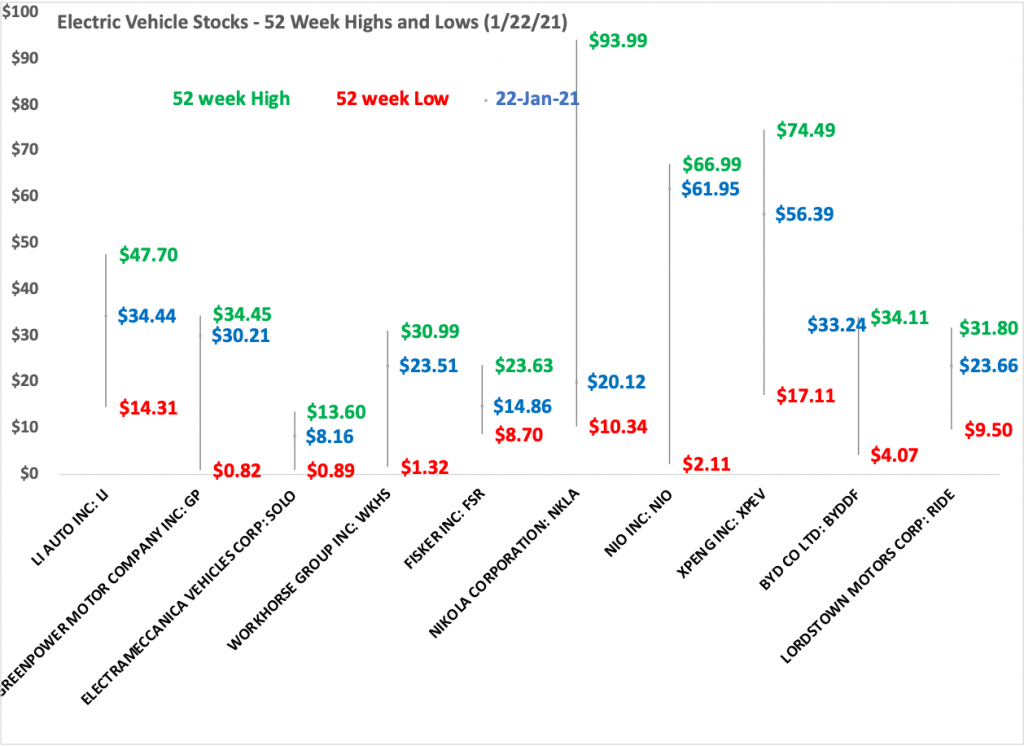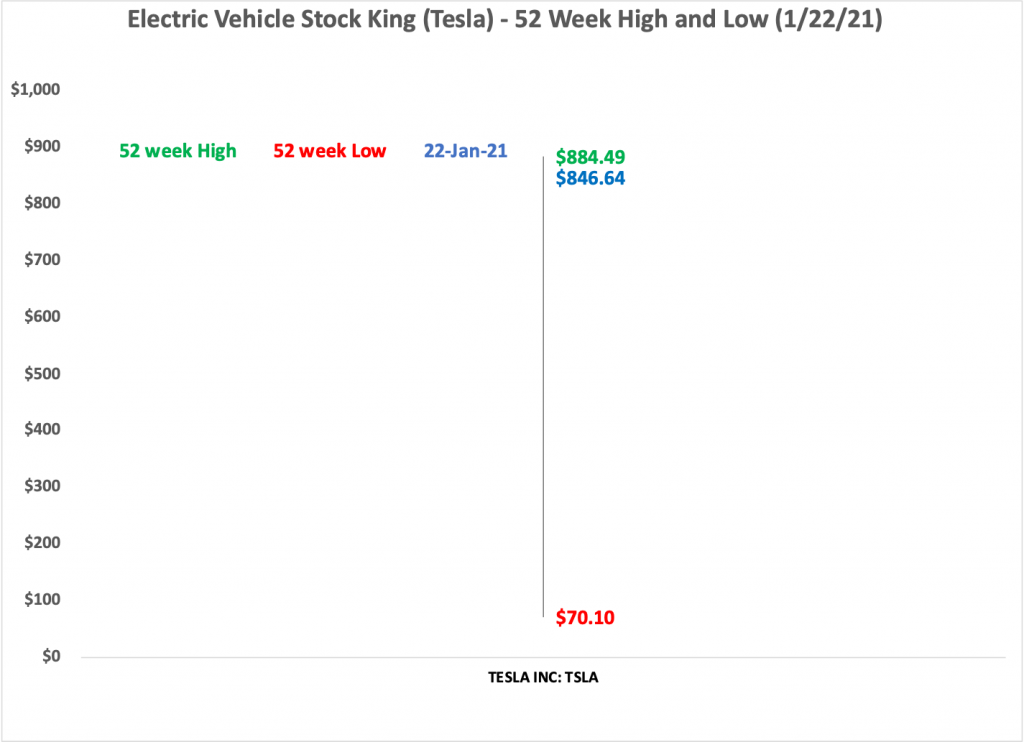Of course the literal translation of the phrase “en fuego” is “on fire”. However, somehow combining electric vehicles with phrasing related to fire does not seem appropriate.
The Mendota Group has had a long and abiding interest in alternatively-fueled vehicles, mainly because of the need to wean our nation (and the rest of the world) from fossil fuels. We can trace too many of our international conflicts, environmental problems and reliance upon certain countries to fossil fuels, oil in particular. Fracking technology in the U.S. has altered some of these dynamics, but many of the bigger issues still remain. Shifting to alternatively-fueled, in particular electric, vehicles for transportation is welcomed.
2020 was the year for electric vehicles stocks. The publicly traded companies that make electric vehicles had a banner year. TSLA returned an astounding 663%, catapulting Elon Musk’s wealth into the stratosphere (like his Spacex company’s rocket launches). To be sure, the increases result from heavy doses of hype and a general upward trend in stocks that is due, in part, to the pandemic. Heck, I get stock tips from my hair person (and, she’s got some good ones). With respect to electric vehicle stocks, does this portend good things for the industry?


At least one article is boldly predicting that we may have reached the “tipping point” of mass adoption for EVs. The article states that global sales increased by 43% in 2020 and further reductions in battery costs are expected to continue to propel the market. The U.S. Department of Energy predicts an aggressive scenario where 40% of new passenger car sales and nearly 20% of fleet car sales are electric by 2030. And, the U.S. percentages are expected to pale compared to China and Europe. Passenger electric vehicle sales in Norway have already reach 54% of the market.

Our primary clients, utilities, are more than happy to replace oil companies as the primary transportation fuel suppliers. With electricity fuel sources increasingly shifting to renewable resources such as wind and solar, a transportation system fueled by electricity translates into a greener transportation system altogether. At the very least, replacing petroleum-based internal combustion engines (ICE) with electric motors will substantially reduce carbon emissions, particularly if battery storage can complement solar and wind-produced electricity (battery prices are dropping) to “smooth out” the periods when the sun doesn’t shine or wind isn’t blowing. The future seems bright.
But, with transitions come costs and adjustments. Although 110 volt (Level 1) charging is fairly ubiquitous in the United States, challenges remain for multifamily units and those without easy access to a charging outlet. In addition, charging a vehicle with a Level 1 charger takes considerably more time than Level 2 (240 volt) [for a Tesla Model 3, it can take 14-21 hours to fully charge on Level 1 and 5-7 on Level 2 – results vary considerably based on air temperature. And, if you’re confused about 110, 120, 220, 230,240 volt designations, see here. Extending the geek out, note that most of the rest of the world juices their households with 240 volt – I count 219 of 267 countries including most of Europe]. So, build out of Level 2 (preferably higher than Level 2) charging is essential. Even better would be fast charging or battery swap-out systems. In addition, utilities will need to ensure that their electricity systems can support the added loads.
With respect to adjustments, car renters/owners/lessors will need to adapt to a different type of driving. Although some car manufacturers are integrating “fake noise” into their vehicles (hear the synthesized muscle sounds of a Ford Mustang Mach-E here – at 1:25)[1], EVs are decidedly quiet and actively accelerate and decelerate through use of the gas pedal. And, while costs to operate and maintain electric vehicles are generally lower than ICE vehicles, many homeowners and owners of multifamily buildings will need to find locations for, and invest in chargers. I for one was quoted over $4,000 to upgrade our electric panel to accommodate a Level 2 charger, this in addition to the cost of the charging station itself.
I expect that an electric vehicle is in my near future, although I’ll need to figure out a way to reduce the first-cost of a Level 2 charger. The good thing is that, with each passing month, the available electric vehicle options are increasing and battery (and, therefore, vehicle) costs are dropping. So, good things can come to those who wait. That said, waiting is less and less of an option since, according to the IPCC the world will need to fairly aggressively pursue a large number of changes to reduce CO2 emissions consistent with limiting warming to 1.5° C by 2030. The exciting thing is that change is happening. We may not yet be at the tipping point, but the stars are definitely aligned such that we can expect to see a lot more EVs on the road in the coming years.
[1] European governments are actually requiring that EVs include fake noise for safety reasons. And, for those who saw the 2011 Vince Vaughn/Kevin James movie Dilemma, you may remember that the duo’s company devised artificial sounds to incorporate into electric vehicles. The movie also infamously included the line, “electric cars are gay. I mean, not homosexual gay, but my-parents-are-chaperoning-the-dance gay.” Yeah, thanks for that doozy.
